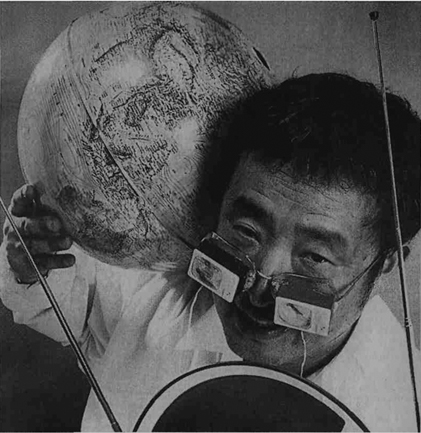Images on-screen and off — Andrew Graham-Dixon reviews Nam June Paik and Eisenstein
"HEEEURGH! Ha! Hegug! Ooooooh! Heh! Heh! Heh! Heh! Heh! Heh!" The late Joseph Beuys' primal scream routine, relayed on 55 television screens, tends to overwhelm just about everything else in "Nam June Paik: Video Works 1963-68", at the Hayward Gallery. Paik, credited in the catalogue with being "the first to explore all the artistic possibilities of television," seems to have considered Beuys a kindred spirit. Picking on Beuys at his more incomprehensible, Paik's V-Matrix with Beuys Voice am Seibu makes a fitting centrepiece to the exhibition.
Just occasionally, through the haze of jump-cuts and dissolves, you get a glimmer of what this pioneer of "video art" might be driving at. The exhibition begins more quietly than it continues, in subaqueous 'gloom illumined only by Paik's 1975 piece, Fish-TV. A frieze of ten television sets runs along the far wall, broadcasting the usual Paik mish-mash of images through ten fishtanks lined up in front of them. Shoals of gup-pies swim aimlessly and incuriously past Paik's video montage. Maybe there's the kernel of an idea here — are we meant to see Paik's fish, the ultimate (presumably his only) captive audience, as emblems of our own slumped, TV-dinner passivity? Perhaps, but it seems an overelaborate way to make the point.
Paik's usual tactic is obscurity. It has been, in fact, the leitmotif 'of his now considerable output, as "musician", performer and all-purpose cathode-ray creator — ever since, in 1962, he concluded the premiere of his Etude for Piano (Forte) by striding out of the auditorium, past his bemused audience, and telephoning a few minutes later to inform them that the concert was over.
Early Paik, as seen in the opening rooms of the show, implicitly criticised commercial television...


